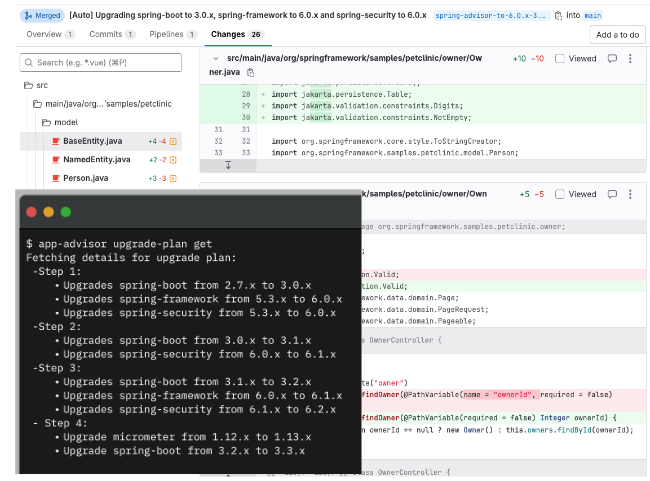The pace of technological change is accelerating, particularly within the Java and Spring ecosystems. New Java and Spring Boot releases are published every six months, making it imperative for stakeholders to keep pace. Recent framework upgrades have also become more aggressive, with significant jumps in baselines—Jakarta EE moved from Java 11 to 17, and Spring transitioned from Java 8 to 17. With Java 21 already released and Java 25 on the horizon, the pressure to upgrade is intensifying. This rapid evolution isn’t limited to Java alone; tools like Hibernate also follow a biannual release cycle, presenting ongoing stakeholder challenges. Despite these advancements, many organizations need help to keep pace.
Ensure Business Continuity with Continuous Upgrades and LTS

Continuous upgrades
Solution
Spring Application Advisor redefines how to upgrade your Spring dependencies to eliminate identified vulnerabilities continuously. It uses OpenRewrite recipes which allow incremental upgrades to understand and review the introduced changes properly. Additionally, it provides additional OpenRewrite recipes recommended by the Spring OSS team to minimize the number of manual (Java) code changes required by developers to upgrade if there are breaking changes or deprecated APIs.

Support
Challenge
Planning and prioritizing upgrades isn’t an easy feat. Organizations still need to make sure that they aren’t on vulnerable versions of libraries. Learn more.
Solution
With Tanzu you can upgrade at your own pace with long-term support releases for Spring projects. These releases are from the original authors of the framework themselves for Spring projects that are out of OSS support. Tanzu Enterprise releases for Spring projects will be made available at a regular cadence containing security patches and critical bug fixes. You can find more information about these releases here.

